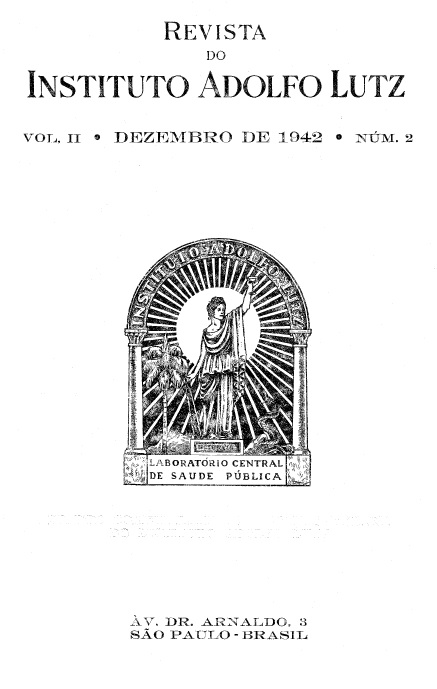Abstract
The yeast-extract of at least 0,1% concentration speeds up the growth of the Peniciliium. notatum. By changing, in the modified Czapek-Dox’ medium, sodium
nitrate by an equal quantity of sodium nitrite, one observes a very remarkable delay in the growth of this mould. The dextrose helps the growth of the mould as well as
the pigmentation of the mycelium. The P. notatum ferments dextrose, sucrose, maltose, and glycerol, without production of gas. It has no action on: adonitol, starch, arabinose, dextrin, dulcitol, esculin, galactose, inulin, inositol, lactose, levulose, mannitol, raffinose, salicin, trehalose and xylose. The milk is not acidified or coagulated by it. Gelatin is not liquefied; indol is not formed and nitrites are not produced from nitrates by it. From this organism we could get dry cultures that maintain, for a long time, (10 months of observation), entirely
morphologic characters, biochemical activities, including the ability to produce penicillin. The spores of P. notatum are not pathogenic for rabbits, guinea-pigs or mice. The Czapek-Dox’ medium modified by Clutterburck, Lovell and Raistrick has shown itself to be superior to Hottinger’s broth in the production of penicillin. The zinc cation that helps the Aspergillus niger in the production of citric acid, is inactive in the production of penicillin that is recognized by Chain as an organic acid. The plate method for determinating the bacteriostatic power of penicillin, is not so exact as the method of tubes with dilutions in series, but it has been used by us because it is quicker and more economic and because, in these first researches, we aimed more at qualitative than at the quantitative aspect. The growth of Staphylococcus (aureus, albus and citreus), Streptococcus (pyogenes group), Pneumococcus and Gonococcus was distinctly and always, in a similar manner, inhibited by the penicillin. The growth of Streptococcus of the viridans group was also inhibited but they showed less sensitiveness. The two strains of Escherichia coli and those of Eberthella typhosa that were researched by us showed themselves as without sensitiveness to the bacteriostatic action of penicillin.
References
1. ABRAHAM, E. P. - 1941 - Lancet, 2 (25), 762.
2. ABRAHA:.VI, E. P. e outro.s - 1941 - Lancet, 2 (7), 177-188.
3. ALEXANDER, A. e outros - 1928 - Dermatomykosen, Berlin (Vol. XI de Handbuck der Haut: Und geschlechtskrankeiten, publicado sob a direção de J. J adasson).
4. ALMEIDA, F. F. - 1939 - Mycologia Médica, ed. Cia. Melhoramentos de São Paulo.
5. BESSEY, E. A. - 1935 - A Text-Book of Mycology, Philadelphia.
6. CHAIN, E. e outros - 1940 - Lancet, 2, 226-228.
7. CHAIN, E. - 1941 - Lancet, 2 (25), 762.
8. CLUTTERBUCK, P. W.; LOWELL, R. e RAISTRICK, H. - 1932 - Biochem. Journal - 26, 1907-1918.
9. DODGE, C. W. - 1935 - Medicai Mycology, Ed. C. W. Mosby Company.
10. FLEMING, A. - 1929 - Brit. Journ. Exp. Pa.th., 10, 222-236.
11. FLEMING, A. - 1941 - Lancet, 2 (25), 761.
12. REID, R. D. - 1935 - Journal of Bacteriology, 29, 215-221.
13. THOM, C. - 1930 - The Penicillia, Baltimore.

This work is licensed under a Creative Commons Attribution 4.0 International License.
Copyright (c) 1942 Instituto Adolfo Lutz Journal
